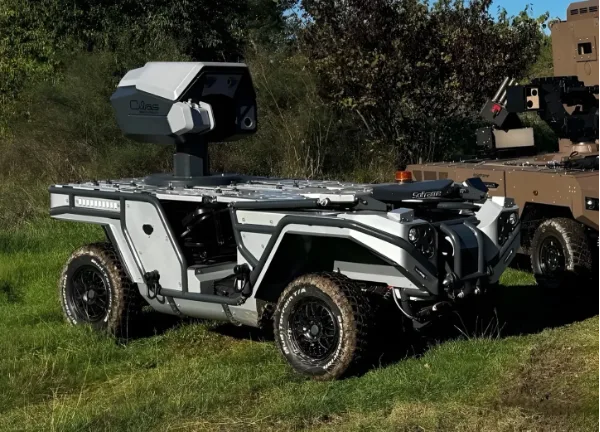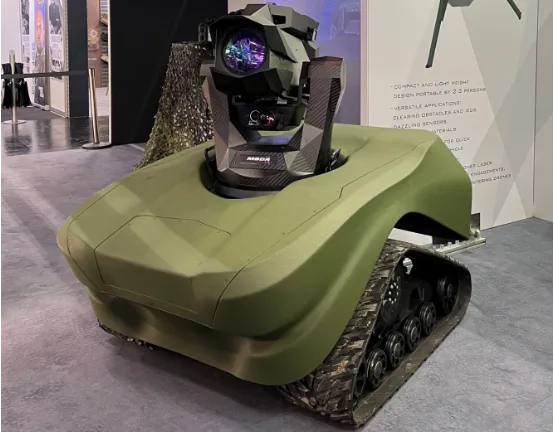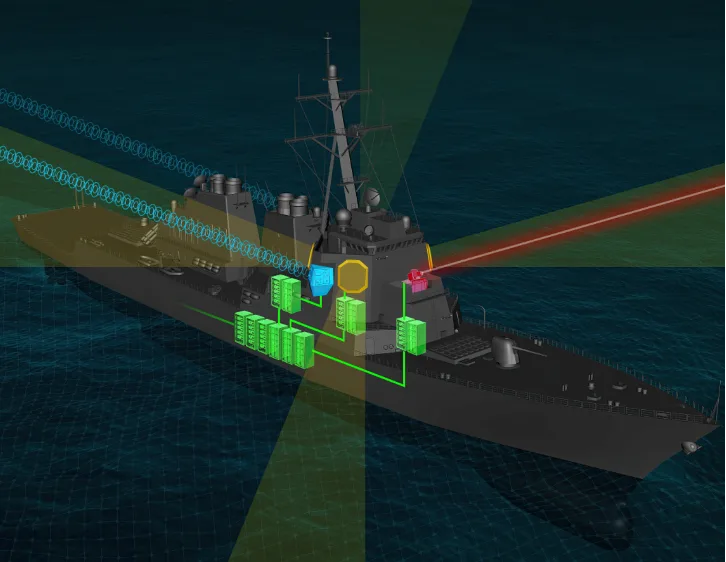This Week in Laser News – What’s Going on With HELs (Week of December 30th 2024)
This week, Turkey fields a laser, more information on French and German HEL development, understanding shipboard power challenges and how it affects DEWs, and the USMC fields MADIS.
News roundup by Caleb Hoover
Monday Dec 30th 2024
Army Recognition.com published an article titled “Roketsan’s ALKA Laser Weapon System Tackles Growing Threat of Drone Swarm”.
In the article, Turkish defense group Roketsan and its newly developed ALKA Directed Energy Weapon (DEW) system is covered. A video on X of the testing has been viewed 61.2K times as of writing this update.
ALKA sahadaki teknolojik üstünlüğümüzü bir kez daha kanıtladı.🦾
— ROKETSAN (@roketsan) December 28, 2024
Test atışları sırasında birden fazla ALKA, hava tehditlerine ve farklı uzaklıklara yerleştirilen kara tehditlerine kilitlenerek imha etti. Zırh hedeflerine yönelik üstün kabiliyetlerini sergiledi. 🚀
🎯 FPV Drone… pic.twitter.com/8J6KUC20zm
In addition to shooting down drones, the video highlights a new employment concept of using laser weapon systems to detonate explosive reactive armor (ERA). According to the article, this novel capability was not on the list of the ALKA system’s requirements but might suggest a new strategic use of directed energy to soften armored targets using their defenses against them. Using lasers to detonate ERA could “disrupt tank crews by simulating an incoming attack, while also wakening the vehicle’s defenses, making it more vulnerable to subsequent strikes from anti-tank missiles or kamikaze drones”.
Special thanks to Benjamin Johnson for sending us the info on this article!
Image caption from the article: With an effective laser range of 750 meters (2.5 kW) to 1,500 meters (5 kW), ALKA is effective against various threats, including mini-drones, loitering munitions, floating mines, and unmanned marine vehicles (Picture source: Roketsan)

Image caption from the article: ALKA distinguishes itself from competing systems with its modular and adaptable design, capable of operating in mobile, portable, or stationary modes while integrating into networks for improved unit coordination (Picture source: Roketsan)

Monday Dec 30th 2024
This week, Jared Keller released an edition of his Laser Wars newsletter titled “Here Come the Laser Robots”
Jared covers the unveiling of French defense contractor SOFRAME’s HE 441 All-terrain vehicle equipped with CILAS’s 2 kW high energy laser as part of the High Energy Laser for Multiple Applications – Power (HELMA-P) laser weapon turret.
This system is designed to burn and destroy incoming UAVs out to 1 km and dazzle UAV sensors out to 3 km.
Some other articles featuring this system have already been featured in the SemQuest Laser Weapon News update for November 11th 2024, but Jared adds in some extra content covering the testing timeline used by the French MOD starting in 2020 and culminating in a Mediterranean Sea trial conducted in June 2023. Apparently, those tests prompted the French government to deploy (2) of these systems to secure airspace during the 2024 Paris Olympics.
SemQuest hasn’t yet covered Germany’s efforts to develop a system with MBDA Deutschland which showed off their 20 kW Modular Integrated Laser Optic System (MILOS) onto an unmanned ground vehicle. Jared’s article covers this topic along with providing an article link for those who want to learn more.
Article image caption: A SOFRAME HE441 lightweight all-terrain vehicle outfitted with a CILAS 2-kilowatt High Energy Laser for Multiple Applications – Power (HELMA-P) laser turret. (SOFRAME)

Article image caption: MBDA Deutschland Unveils Modular Integrated Laser Optic System (MILOS) for German Army

Thursday JaN 2nd 2025
Asian Military Review published an article by Tim Fish this week covering the “Power Hungry Warships”
The article opens with this:
“Providing power on warships to meet the growing demand from ship systems is becoming more of a concern, particularly as legacy warships also need more power to host weapons and sensor upgrades.”
The article goes onto explain that the historical trend of diesel-powered ships having two separate engine arrangements (one for propulsion and one for the ’hotel’ load) is under significant strain. Additional topics of this article include the idea of integrated power system (IPS) holding the key to sustained operations by using all diesel engines on the ships electrical system to power all everything as one cohesive package. But there are many challenges with making this a reality.
Article image caption: The MPPS from Northrop Grumman establishes an electrical zone generating power will be able to supply the hotel load, EW systems, advanced sensors and DE weapons. (Northrop Grumman).

Thursday Jan 2nd 2025
The Defense Post published an article by Inder Singh Bisht this week with the headline “US Marines Field JLTV-Mounted System to Destroy Drones”
The article reports that the “US Marine Corps has fielded the first Marine Air Defense Integrated System (MADIS)”.
The system is now deployed to Hawaii with the 3rd Littoral Anti-Air Battalion of the 3rd Marine Littoral Regiment (MLR).
MADIS is a replacement for the legacy Man-Portable Air Defense System (MANPADS). The MADIS system is mounted on two Joint Light Tactical Vehicles (JLTV). The capability is split between the two vehicles with one vehicle carrying a mix of kinetic and non-kinetic options like a 30mm cannon, a machine gun, and a Stinger air-to-air launcher, as well as signal jammers or lasers.
The other vehicle carries a 360-degree radar and command and control (C2) elements for tracking and detection.
MADIS is projected to be procured and fielded over the next decade with ultimately (190) total systems planned to enter service from now to 2035.
MADIS is an integral part of the plan to implement layered defense by using Medium-Range Intercept Capability (MRIC), MADIS, and Light MADIS (LMADIS) to provide different levels of protection to the USMC.
Article Image Caption: Marine Air Defense Integrated System being delivered to 3d Littoral Anti-Air Battalion in Hawaii. Image: Michael Dilley/ US Marine Corps

That’s all for this week. Keep reading or check back for updates.
